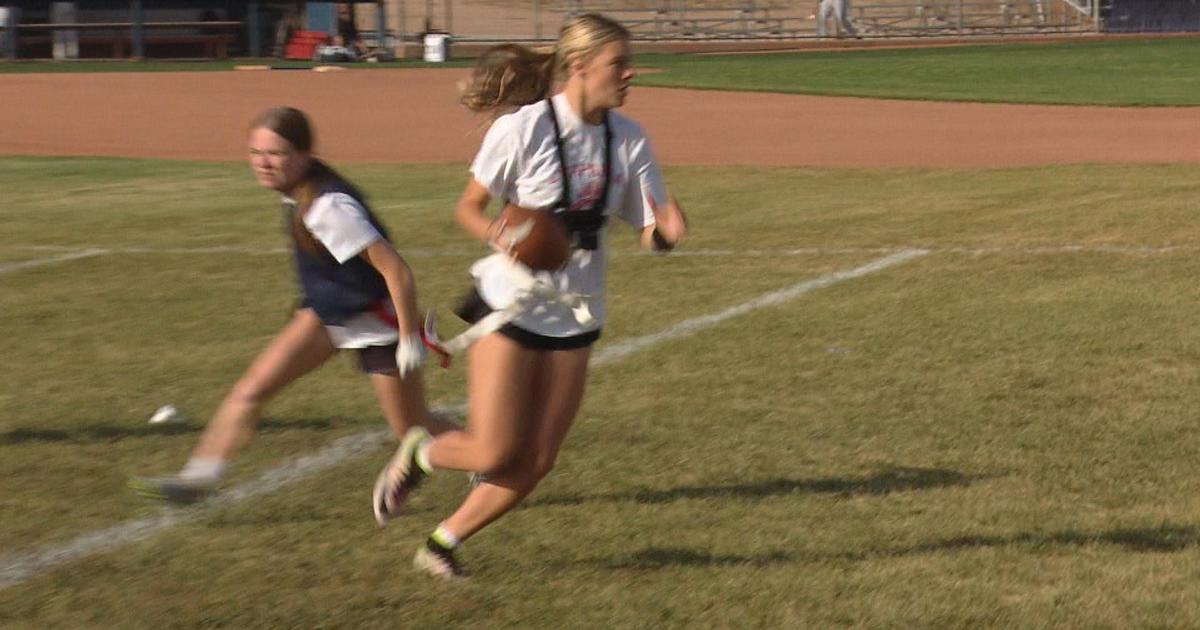Creatures Are The Teachers In Animal-Science Classroom
By MORIAH BALINGIT
The Washington Post
ARLINGTON, Va. (AP) -- Behind a locked door in a far-flung wing of a labyrinthine school building, there is something wildly unexpected: a bustling animal laboratory for hundreds of creatures from many corners of the animal kingdom.
In neatly stacked cages and aquariums, there is a bilingual talking parakeet (he greets visitors with a Spanish "hola"), salamanders, sugar gliders and lots and lots of rodents: rats, mice, and gerbils. There are tarantulas, scorpions and snakes. And a grassy, fenced-in lot adjacent to the building is home to a pair of goats and to Snickers, an uncooperative, chocolate-colored minihorse. There are an estimated 250 specimens on site and 50 species, a veritable zoo in an era when schools typically have just a few animals -- if any -- for students to work with.
This is Arlington County's animal science program, housed in the Arlington Career Center, where about 60 students come to prepare for careers involving animals. When Cindy Schall started teaching animal science in 1989, the program was small and focused on agricultural animals. But few students in suburban Arlington were interested in becoming farmers, so Schall updated the curriculum and started expanding the school system's collection. As the program grew, so did the family of creatures living in the animal science wing because Schall wanted to ensure students had plenty of one-on-one time with a variety of species.
For some students, it's a chance to solidify their aspirations to become veterinarians or veterinary technicians or to try for jobs at animal shelters and zoos.
For others, it's a chance to earn a required science credit in a class where half of the academic program is spent handling animals. Students said it is a far more enjoyable and appealing way to learn.
Michelle Guzman, 16, a junior at Washington-Lee High School, said her chemistry class focuses on things that are difficult to see: atoms and compounds and chemical bonds. In animal science class, she's hand-taming a tarantula. Last Tuesday, she let the creature settle in on her hand and crawl up her wrist -- adorned with colorful bracelets -- while other students gawked.
"I get to actually see and feel the animals, and we get to interact," Michelle said. It has helped her to better understand the concepts she learned in biology.
For 15-year-old Rebekah Wilson, who aspires to be an ecologist, the class lessons are weighted with real-world responsibility. Fail to follow instructions or pay attention, and "I might kill an animal."
"It makes it much more of a life-or-death situation," Rebekah said as she handled a salamander.
In the classroom and the laboratory, students learn about the animal kingdom and genetics, and are schooled in the hard lessons of animal careers. They learn, for example, that being a veterinarian will probably involve euthanizing their animal patients and helping their owners through that experience.
The same year teacher Scott Lockhart had to put down his dog, he put students through a role-playing exercise, pretending they were veterinarians who had to talk to him about his dog being euthanized. It gave students a sense of the most difficult parts of a job.
"Can you have a dialogue with me and tell me how you can help me through this?" Lockhart recalled asking the students.
The class also is an opportunity for students to learn that they don't want to work with animals, a lesson that can be just as important. The class, after all, involves a fair amount of less-than-pleasant chores.
On a busy Tuesday, one girl wrangled three ferrets as they lolled around on the ground, following closely with a napkin -- they are not potty-trained. Other students cleaned out cages, aquariums and stalls or fed roaches to the reptiles. They also have to overcome their phobias of rodents and snakes, which they must handle while completing assignments.
And the animals are not always cooperative, so students have to learn patience. On Tuesday, a student was trying to coax a sleepy hedgehog out of its shelter; when she finally retrieved him, the hedgehog urinated on her.
A pair of students took turns working with Snickers, the minihorse, trying to get her to leap over a horizontal bar propped up a couple of feet off of the ground on two posts as part of an exercise routine. A pair of students tried unsuccessfully to persuade her to jump over the bar; she instead ran straight into it, knocking it over.
"She can be a pain sometimes," said Rudy Henriquez, a 17-year-old senior at Wakefield High School.
For many students, the class reaffirms their love of working with animals. Students have gone on to jobs in veterinary clinics, at animal shelters and at the National Zoo in the District. Schall said she hopes more will go on to become veterinary technicians, a field that requires less training than a veterinarian but is predicted to grow rapidly in the coming decade.
Monica Madera, 25, took the class seven years ago when she was a senior at Washington-Lee, and she said it confirmed her dream of becoming a zoo veterinarian. It also made her much more comfortable handling squirming animals.
"When you do well in a class and you actually enjoy what you're doing, I think that helps you figure out what you want to do," Madera said.



